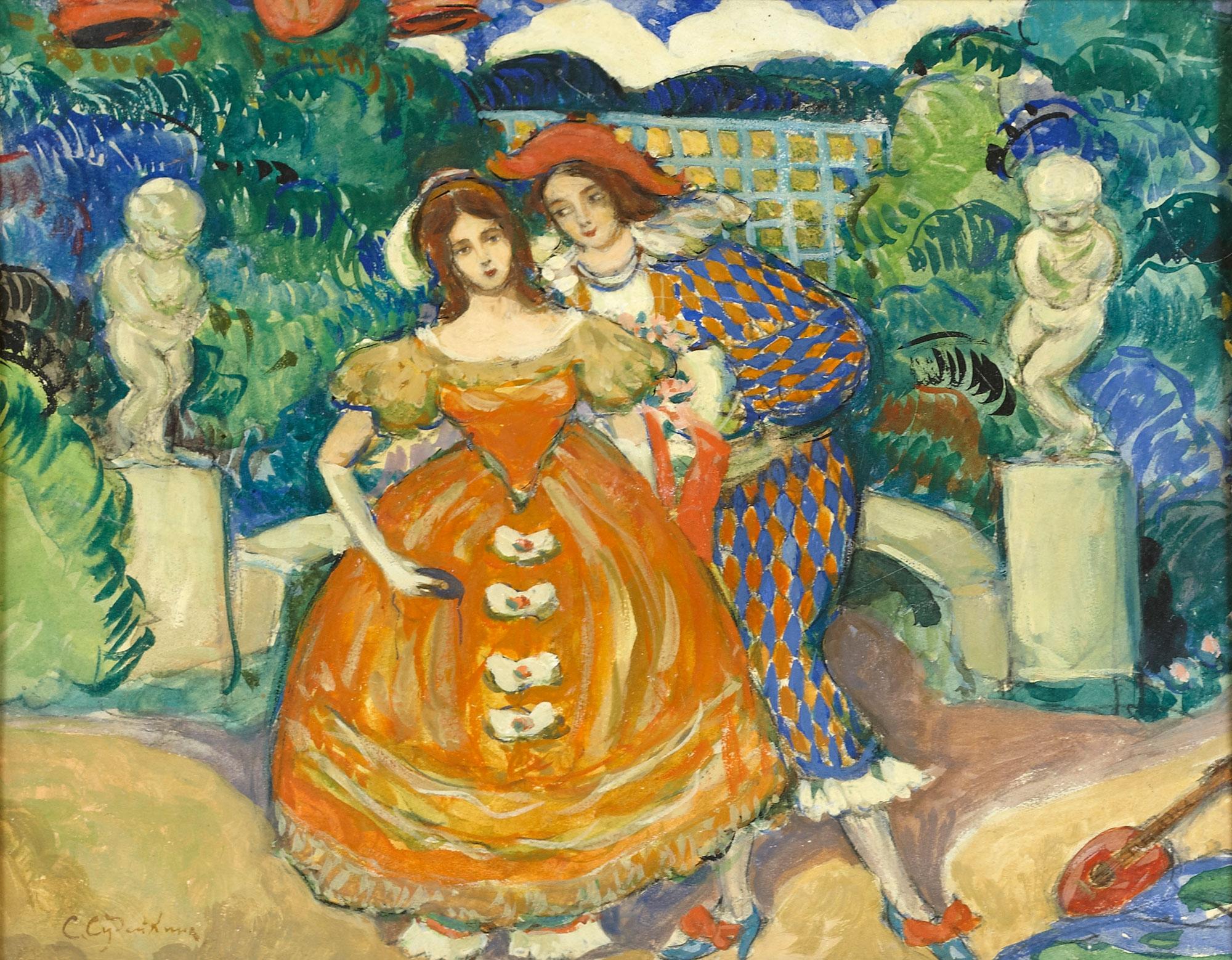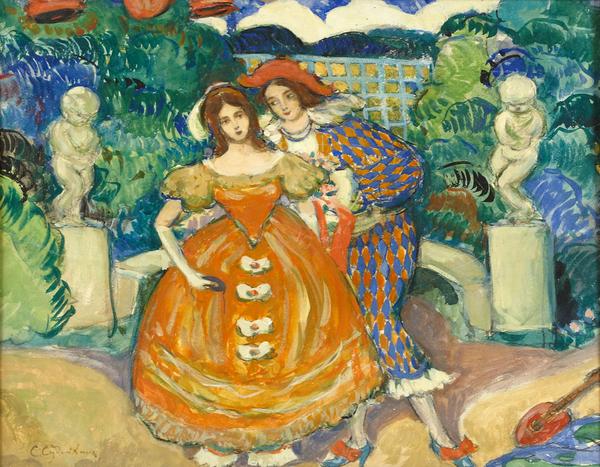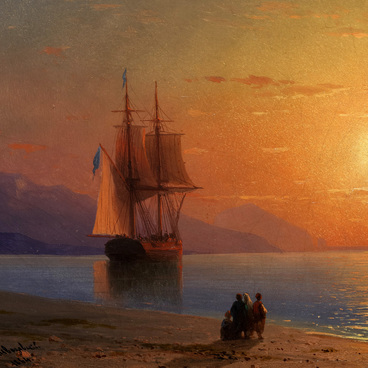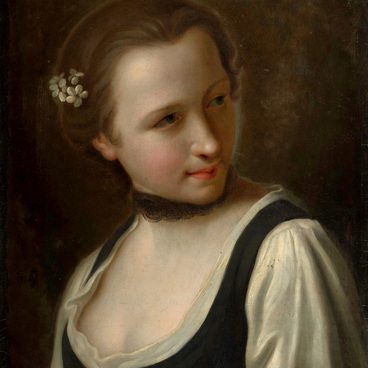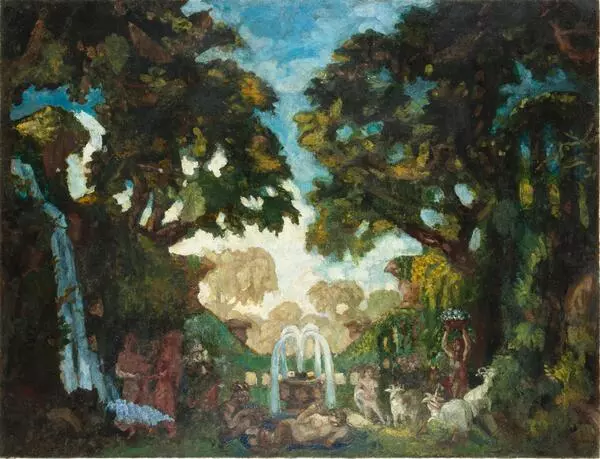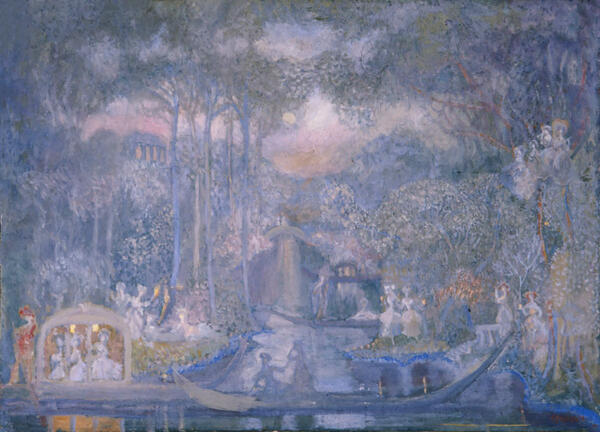Sergei Yurievich Sudeikin (1882-1946) was a Russian scene painter, stage designer, painter and graphic artist, avant-garde artist. He was widely known as a representative of the ‘daring’ generation of painters of the pre-revolutionary era. He was an active participant in exhibitions and groups of the ‘World of Art’, the Union of Russian Artists, the Blue Rose’, the Jack of Diamonds’, the Donkey’s Tail, the Youth Union and others.
The basis of his improvisational creative talent was an addiction to an art game, a mixture of theater and life, high and low, false and genuine. The artist worked a lot and fruitfully on the design of theatrical productions, painted the artistic cabaret “Stray Dog”, “Halt of Comedians”, “Bat”, composed costumes for their visitors. The theme of the theater and, more broadly, of all spectacular: costume balls, masquerades, carnivals and festivals, constantly appeared in Sudeikin’s easel work. The preference for pastoral, gallant, theatrical motifs, as well as the choice of mixed technique, related this master to the artists of the World of Art association, who widely used various combinations of graphic materials in their works — watercolors, pastels, gouache, graphite, coal, colored pencils.
Freely and as if effortlessly written by Sudeikin in the 1910s, ‘Masquerade’ was made with tempera, gouache and pastel. The picture is deliberately likened to a stage, on which the characters of the Italian folk comedia del arte froze in the stage in a scene directed by the artist. As if from the theater’s stall, we are looking at the frivolous coquette Kolombina and the heartthrob Harlequin, we admire the angular or graceful plasticity of their deliberately puppet figures.
The park landscape that unfolds behind these characters is completely analogous to the theatrical backdrop. Bright, festive colors — a combination of dense greenery of vegetation and dense ocher of the sand path, the orange tone of Columbine’s lush dress and the red and blue motley of Harlequin’s clownish costume — finally convince of the artificiality of the depicted scene. If we use the definition of S. Makovsky, the heroes of Sudeikin’s works ‘… always remain dolls, which the artist plays with carelessness, enviable in our difficult age’.
